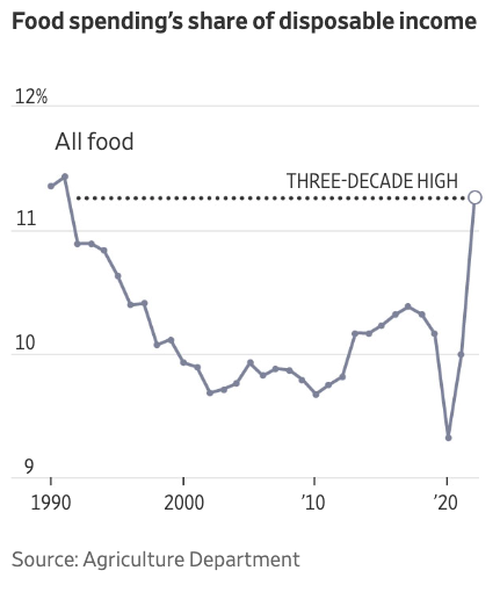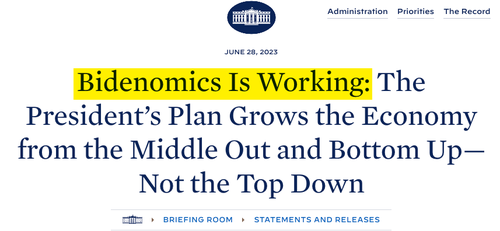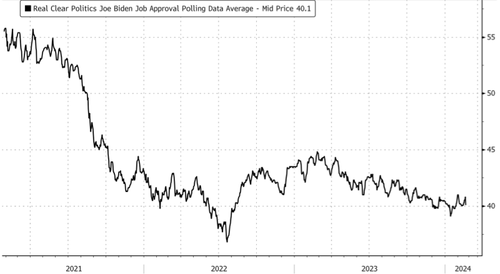Supermarket Scramble: Food Spending's Share Of Disposable Income Hits Highest Level In Three Decades
The most recent inflation prints (CPI & PPI) are the latest examples of Bidenomics failing Americans. For many, the supermarket is a painful experience (much worse than gas stations) as prices for everyday necessities remain elevated while real wages are negative once again. The risk of inflation re-accelerating is even more terrible news for consumers ahead of spring.
We penned a note earlier this month titled "Food Inflation Is Not Yet Dead" as commodity prices for cocoa beans, ground beef, robusta coffee, and orange juice, among many others, continue marching higher despite the Biden administration's promise that Bidenomics is working.
A startling new report from the Wall Street Journal shows consumers spent 11.3% of their disposable income on food, the highest level since the early 1990s.

"If you look historically after periods of inflation, there's really no period you could point to where [food] prices go back down," said Steve Cahillane, chief executive of snack giant Kellanova, in an interview, warning food prices "tend to be sticky."
What Cahillane means is that consumers should get used to spending a higher percentage of disposable personal income on food in the era of failed Bidenomics.
Food inflation is a sour subject for the administration ahead of elections. President Biden recently said: "The American public is tired of being played for suckers."
But, Mr. President. What happened to this:
And the American people are waking up to the endless failures of this administration as polling data for the president craters.
Inflation may have slowed down, but shrink-flation is in full force. Get used to paying higher prices and receiving less.



